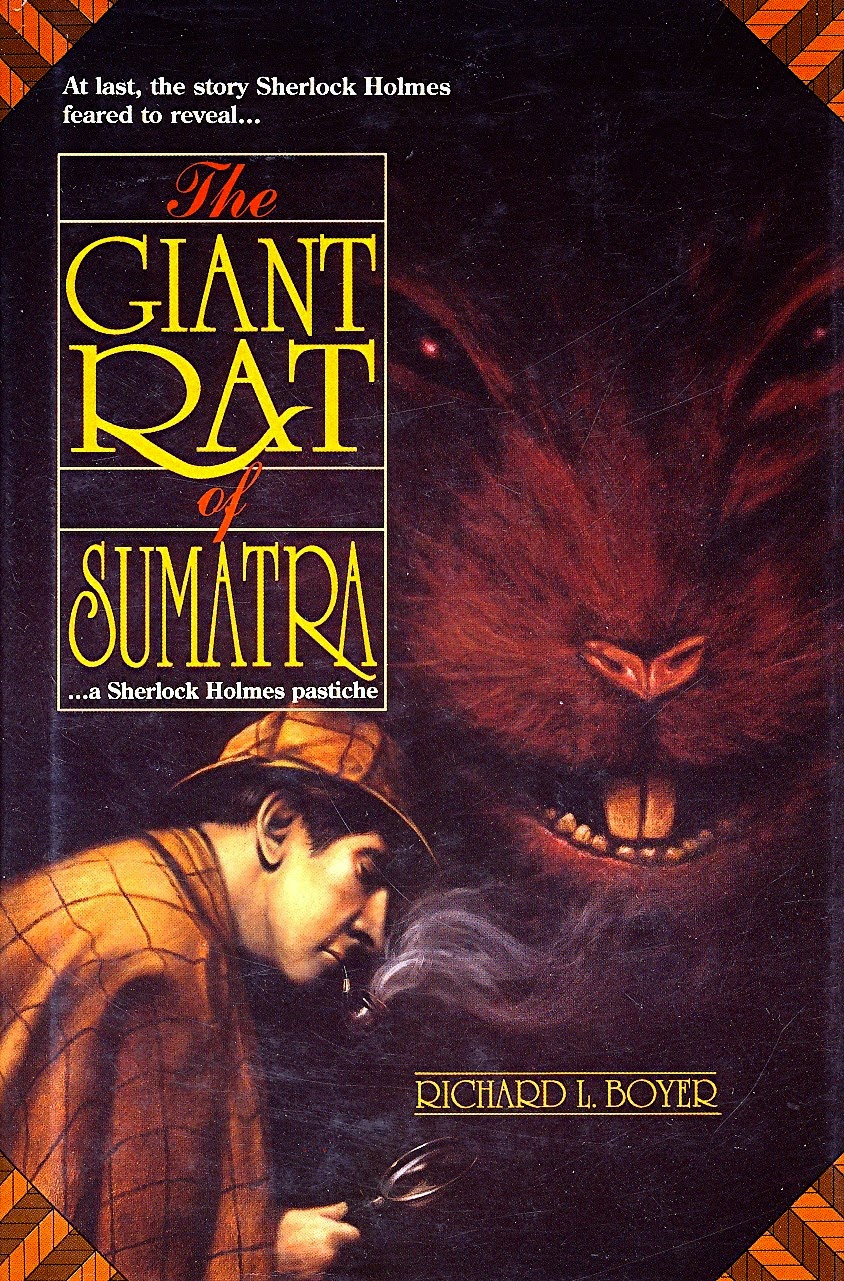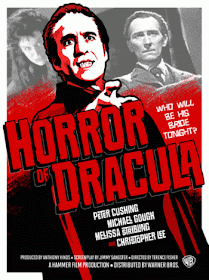It is nearly impossible to list every single Sherlock Holmes pastiche which has ever been published in some form. There are a myriad of them in film, television, audio and print form. Having already examined movies and television, I'm excluding those from this list and focusing mostly on Sherlock Holmes novels or short story collections.
 #10 - The Seven-Per-Cent Solution by Nicholas Meyer
#10 - The Seven-Per-Cent Solution by Nicholas Meyer - Without doubt one of the most widely-known pastiches, Nicholas Meyer's novel brought the detective back into the limelight, and though not the first pastiche, turned the Sherlock Holmes pastiche into a literary sub-genre. Meyer boldly decided to present an alternate version of the original canon in his novel, deciding to inform readers what
really happened during Sherlock Holmes' presumed death.
In the thralls of cocaine addiction, Holmes begins to persecute his old maths tutor, Professor Moriarty. Knowing that Holmes is doing harm to both the Professor and himself, Watson manages to lure the detective to Vienna to see Sigmund Freud. Freud will work to cure Holmes of his addiction, but no sooner has the treatment begun than Freud, Holmes and Watson are thrown into a case. Meyer's novel is fast-paced and engaging as he managed to capture Doyle's original tone excellently. The story, while aggravating to the most devout Doylean, is an interesting alternative history, and the novel is written with such conviction that the story line is not too far fetched. As I noted above,
The Seven-Per-Cent Solution was not the first Sherlock Holmes pastiche, but it made writing them popular and the novel became a bestseller, ultimately spawning two (lesser) sequels and a beloved film adaptation.
#9 - The Exploits of Sherlock Holmes by Adrian Conan Doyle & John Dickson Carr - This collection of short stories has the distinction of being authored by Conan Doyle's own son and master mystery writer John Dickson Carr. Together, the two collaborated on a series of short stories, each one based on references made to untold stories from the canon. What resulted is a milestone in Sherlockian history, and some of the finest crafted short stories in the detective's long literary history.
Though there are some stories which are easily forgettable in the collection, some make worthwhile reading on their own. "The Adventure of the Black Baronet" concerns an impossible mystery and a family curse which Holmes must solve in order to acquit a wrongly-accused woman. In "The Adventure of the Seven Clocks," Holmes must determine why a mild-mannered man becomes enraged at the mere sight of a clock, and discovers political implications in the case. And in "The Adventure of the Deptford Horror," Holmes and Watson face another locked-room puzzle, and a means of committing murder which made my hair stand on end when I first read this collection. Written in an extraordinarily authentic voice,
The Exploits of Sherlock Holmes are some of the finest Sherlock Holmes short stories which I have ever happened across.
#8 - The Ordeals of Sherlock Holmes by Jonathon Barnes - Though the only pastiche that is not a published book on this list, this Big Finish audio drama simply had to be included. Writer Jonathon Barnes has created four, interconnected cases from four periods in the great detective's career. Holmes and Watson will face danger at every turn as they take on what amounts to be one of their most epic adventures.
The Ordeals of Sherlock Holmes is truly a story of epic proportions. Each of the four hour-long audio recordings are set in a different decade, beginning with Holmes just starting his career as a consulting detective and ending with the detective having long-since retired. The mysteries are truly engaging and thrilling, complimented by Nicholas Brigg's excellent turn as Holmes, and Richard Earl's remarkable reading as Dr. Watson. Big Finish has crafted some excellent Sherlockian offerings, but
The Ordeals of Sherlock Holmes is certainly among their best. (As an aside, Big Finish's next Jonathon Barnes-scripted Sherlock Holmes series,
The Judgement of Sherlock Holmes is to be released later this December.)
#7 - Dr. Jekyll and Mr. Holmes by Loren D. Estleman - In the pastiche world, it's fairly common for two literary characters to meet. One of the best examples of this is Loren D. Estleman's
Dr. Jekyll and Mr. Holmes which brilliantly weaves Holmes and Watson into the plot of Robert Louis Stevenson's original novella. Though the
twist ending of Stevenson's story is known the world over, it's fascinating to see the original portrayed as a mystery once more, and part of the suspense and enjoyment of the story is seeing Holmes piece together the clues to come to the inevitable conclusion.
Estleman presents a very authentic Sherlockian voice, which adds further to the pastiche. Holmes and Watson are presented remarkably well as are Stevenson's characters, and their interaction is seamless. Taking no liberties with the original
Dr. Jekyll and Mr. Hyde, Estleman has managed to create one, unique plot which doesn't feel disjointed in any way. It is interesting to note that
Dr. Jekyll and Mr. Holmes was Estleman's second Sherlockian foray - his first being the rather melodramatically titled
Sherlock Holmes vs. Dracula. Much like the novel which followed it,
Sherlock Holmes vs. Dracula incorporated Sherlock Holmes in the plot of Bram Stoker's novel, but not in the same flawless manner as this pastiche.
 #6 - The Scroll of the Dead by David Stuart Davies
#6 - The Scroll of the Dead by David Stuart Davies - This particular pastiche will also hold a special place in Sherlockian heart as it was the first pastiche I ever read. David Stuart Davies, one of my favourite Sherlockian writers, has written what is perhaps the most exciting, action-filled novel of its kind. Matching wits with a maniac, Holmes and Watson must use all of their resources as they hunt down an ancient Egyptian papyrus which claims that it can raise the dead from their graves. As they embark on their dangerous mission, the duo do not who they can and cannot trust.
The Scroll of the Dead is an un-apologetically exciting novel. It is filled throughout with set-pieces which make for exciting reading, linked together by a complex plot, wrought with twists, turns and suspense. Throughout, Davies writes with an unmatched replication of Doyle's original making
The Scroll of the Dead (for all of its outlandishness) feel like an original Sherlock Holmes novel. It's an overall fun, exciting read which should thrill and delight any Sherlockian.
So, we've come to the end of part one. Come back next week as I look at the top five best Sherlockian pastiches. As we enter the holiday season, maybe you'll find the ideal gift for that Sherlockian on your list...


































